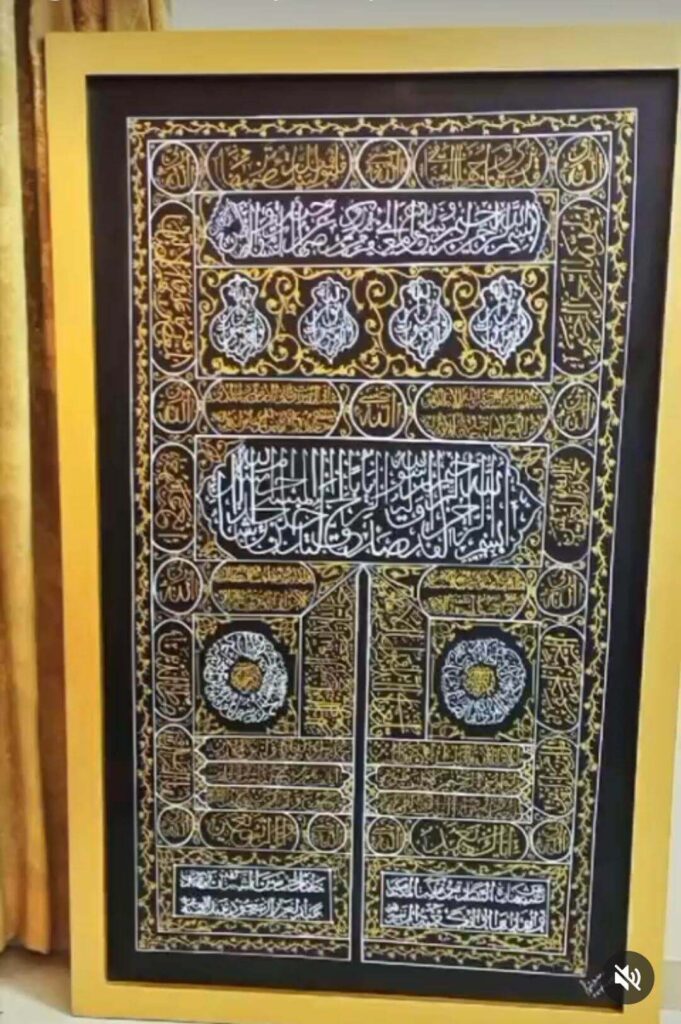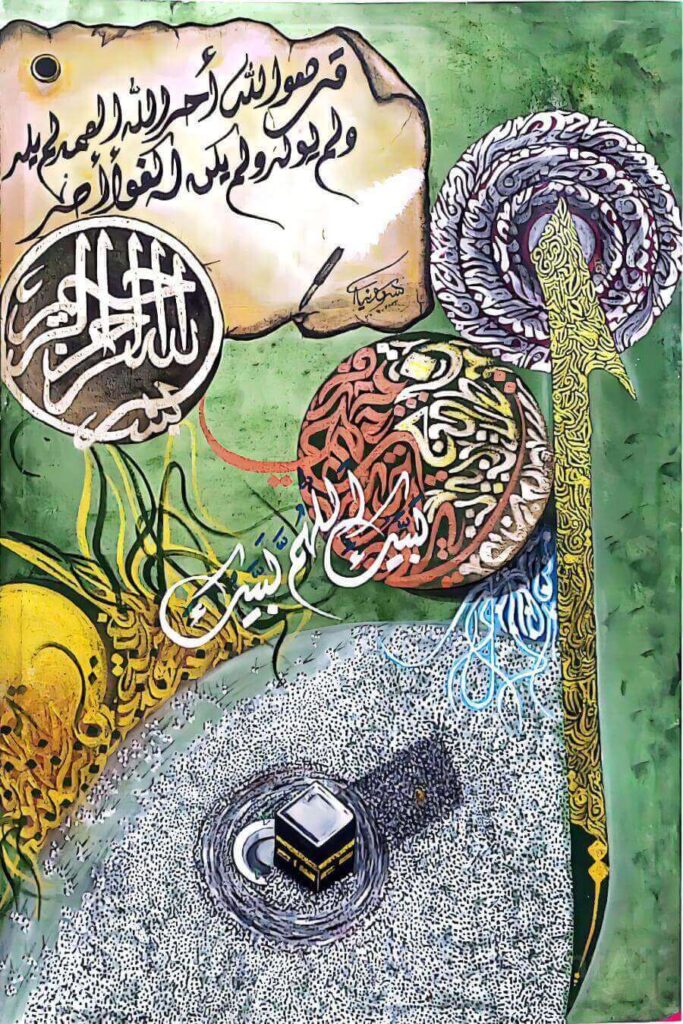About the Author- Sonia Amir
I am a mother of four. I work as a Calligraphy teacher at Educator School and am a makeup artist. I am passionate about painting, sketching, calligraphy, and drawing. Since school, I have been interested in drawing and have always excelled in this subject.
My Inspiration!
My father has always been a big inspiration and motivation for me. He worked as a Goldsmith, using his hands to create beautiful pieces. Since I was a young girl, I have seen him work tirelessly daily to provide for us. I inherited many of his talents, as he was a gifted designer with skills in sketching, creating alphabets, and making jewelry. Fortunately, I have a very supportive husband, and my family always encourages me in my artwork. I want to thank my husband, younger brother, and childhood friend for all their support and inspiration in pursuing my goals and completing my artwork.
After years of practicing Qalam techniques, I have gained extensive knowledge in calligraphy. With mastery in oil painting, acrylic, and calligraphy on canvas, I am now qualified to instruct others in these art forms.
I’m going to share my tips and Guidance for beginners on how to create an Islamic Art. And what should be essential knowledge to begin your journey in this art form. Creating Islamic art is a beautiful and culturally significant form of artistic expression. Islamic art is represented by intricate geometric patterns, calligraphy, and representations of nature. Here are some tips to help you create Islamic art:



Understand the Cultural and Religious Context:
Gain an understanding of the cultural and religious significance of Islamic art. It often reflects themes related to spirituality, nature, and the Islamic faith.
Study Traditional Islamic Art Forms:
Explore traditional Islamic art forms, such as calligraphy (Arabic script), geometric patterns (zellij, girih), arabesque designs, and floral motifs. These are foundational elements of Islamic art.
Learn Arabic Calligraphy:
Arabic calligraphy is a prominent feature of Islamic art. Study different styles of Arabic script and practice calligraphy techniques. Start with simpler scripts and gradually move on to more complex ones like Diwani or Thuluth.
Focus on Geometry:
Geometric patterns are a hallmark of Islamic art. Learn about the principles of Islamic geometry, including the use of grids, circles, and symmetry. Practice creating intricate geometric designs.
Use Symmetry and Repetition:
Islamic art often relies on symmetry and repetition to create harmonious and visually appealing compositions. Pay attention to balance and repetition in your designs.
Select Appropriate Materials:
Choose materials that align with traditional Islamic art, such as high-quality paper, canvas, or ceramics. Consider using natural pigments or materials like gold leaf for added authenticity.
Incorporate Nature and Floral Motifs:
Islamic art frequently features representations of nature, including floral motifs and elements like trees and birds. Study these motifs and incorporate them into your artwork.
Study Historical Islamic Artworks:
Research historical Islamic artworks, including famous mosques, manuscripts, and ceramics. Analyze the techniques, patterns, and symbolism used in these works for inspiration.
Practice Patience and Precision:
Islamic art requires precision and attention to detail. Take your time when creating intricate patterns and calligraphy. Patience is key to achieving the desired level of intricacy.
Experiment with Colors:
Islamic art often features vibrant colors, so don’t shy away from experimenting with a wide range of hues. However, be mindful of color symbolism in Islamic culture.
Respect Cultural Sensitivities:
Be aware of cultural sensitivities when creating Islamic art. Avoid depicting human or animal figures, as these are generally discouraged in Islamic art due to religious beliefs.
Seek Guidance and Feedback:
Connect with experienced Islamic artists, attend workshops, or seek feedback from those knowledgeable in the field to improve your skills and understanding of Islamic art.
Infuse Your Style:
While learning traditional Islamic art techniques is essential, don’t be afraid to infuse your personal style and creativity into your work. This can result in unique and contemporary interpretations of Islamic art.
Practice Regularly:
Consistent practice is key to mastering any art form. Dedicate time to honing your skills and creating Islamic art regularly.
Share Your Work and Engage with the Community:
Share your Islamic art on social media, in local exhibitions, or within the Islamic art community to receive feedback and connect with like-minded artists.
Creating Islamic art is a meaningful and culturally rich form of artistic expression. By studying traditional techniques and incorporating your unique perspective, you can contribute to the rich tradition of Islamic art.
Follow me on social media to explore more techniques and artworks!
